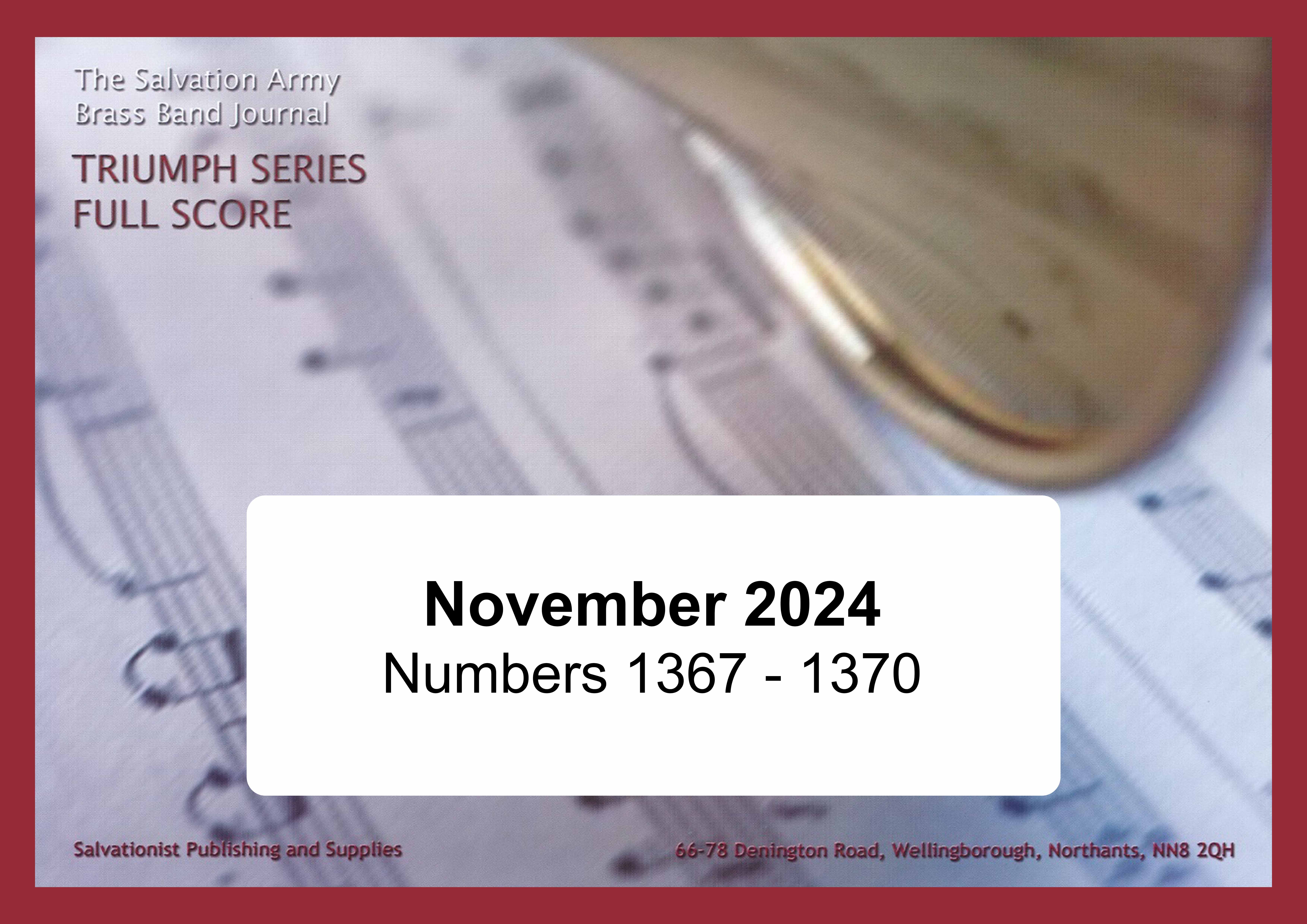Results
-
 £54.20
£54.20LARGO AL FACTOTUM (Vocal Solo (Baritone) with Brass Band) - Lorriman, Howard
From The Barber of Seville. Grade: Medium.
Estimated dispatch 7-14 working days
-
 £50.90
£50.90LAURETTA'S ARIA (Vocal Solo (Soprano) with Brass Band) - Puccini, Giacomo - Fernie, Alan
From Gianni Schicchi. Grade: Medium.
Estimated dispatch 7-14 working days
-
 £50.90
£50.90O SOLE MIO (Vocal Solo (Tenor) with Brass Band) - Di Capua, Eduardo - Fernie, Alan
Grade: Easy/Medium.
Estimated dispatch 7-14 working days
-
 £50.90
£50.90STILLE NACHT (Vocal Solo (Soprano) with Brass Band) - Gruber, Franz - Fernie, Alan
Silent Night. Grade: Easy/Medium.
Estimated dispatch 7-14 working days
-
 £54.20
£54.20TOREADORS' SONG (Vocal Solo (Baritone) with Brass Band) - Bizet, Georges - Lorriman, Howard
From Carmen. Grade: Medium.
Estimated dispatch 7-14 working days
-
 £54.20
£54.20UNA VOCE POCO FA (Vocal Solo (Soprano) with Brass Band) - Lorriman, Howard
Cavatina from The Barber of Seville. Grade: Medium.
Estimated dispatch 7-14 working days
-
 £50.90
£50.90VIOLETTA'S ARIA (Vocal Solo (Soprano) with Brass Band) - Verdi, Giuseppe - Fernie, Alan
From La Traviata. Grade: Easy/Medium.
Estimated dispatch 7-14 working days
-
£19.50
Aria - Solo for Euphonium with Brass Band Accompaniment
Estimated dispatch 5-7 working days
-
 £79.95
£79.95Orion (Brass Band - Score and Parts)
Orion was named after the giant huntsman in Greek mythology and is a prominent constellation located on the celestial equator and visible throughout the world. It is one of the most conspicuous and recognisable constellations in the night sky. This piece and its inspiration were composed as a tone poem creating a musical picture of this amazing phenomenon.The opening introduces the constellation. Starting mysteriously with the percussion and basses this section develops a series of rhythmic and harmonic interludes from the upper brass. As this introduction develops, the melodic line lead by the Solo Cornet and Euphonium builds as the accompanying instruments increase in their rhythmic complexity. This section climaxes with a short fanfare motif which will be a prominent theme throughout this piece.The fast rhythmic section that follows serves as a technical test for the players. The thematic device introduced by the Solo Cornets is passed around various soloists and sections within the ensemble. This part of the tone poem gives the opportunity for the ensemble to highlight their technical prowess. The fanfare motif returns to conclude this section and takes the piece into the slow middle movement.Motifs heard earlier are mixed with new ideas in this slow section which give an opportunity for a variety of soloists to demonstrate their musical prowess. After the various solo passages and cadenzas, the mood shifts dramatically to a more ominous section that builds in texture and dynamic. Concluding with our returning fanfare motif the piece then builds in momentum towards our finale section.This finale is a technical showcase which will further test the playing ability and stamina of soloists, small groups and the full ensemble. Using prominent musical themes heard throughout this piece the music builds to a glorious conclusion fitting with wonderful constellation.
Estimated dispatch 7-14 working days
-
 £55.00
£55.00Triumph Series Brass Band Journal, Numbers 1367 - 1370, November 2024
1367: March - Risen, conquering Son (Noel Jones)Two uplifting Easter songs are featured in this march; Low in the grave he lay (S.A.S.B. 228) with words and music written by Robert Lowry, and Thine is the glory (S.A.S.B. 276) with words by Edmond L. Budry and music by George F. Handel. Both serve as a powerful reminder of the resurrection of Jesus.1368: Horn Solo - O how much he cared for me (Keith Wilkinson)This solo was originally penned for Bandsman Frank Taylor, who plays Solo Horn at Stapleford Citadel Corps. As its basis, it uses the popular hymn No one ever cared for me like Jesus by Charles F. Weigle, a Baptist evangelist who wrote more than a thousand hymns.1369: My Redeemer lives (Olaf Ritman)This arrangement of Reuben Morgan's well-known worship song (S.A.S.B. 223) was first written as an accompaniment for congregational singing and can still be used in that way. It was inspired by the American R&B group Tower of Power and is meant to sound soulful and funky.1370: Selection - With life anew (Mervyn Clarke)This selection features music associated with two hymns; Blessd Saviour, now behold me (S.A.S.B. 575) by William Baugh and Breathe on me, breath of God (S.A.S.B. 294) by Edwin Hatch. Although Edwin Hatch's hymn-writing output was very small, this hymn has seen numerous settings and melodies associated with the words from which the piece takes its title; two of these melodies are featured here in Trentham and Carlisle.
Estimated dispatch 7-14 working days
